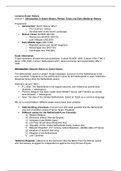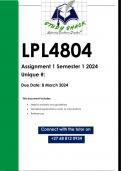Class notes
Dutch History Lectures
- Course
- Institution
Provides an overview of Dutch history from Late Antiquity to the present day, and is based on textbooks and lectures. The course focuses on political and administrative processes, and social-economic, religious and cultural developments. Separate attention will be paid to the economic and social de...
[Show more]




